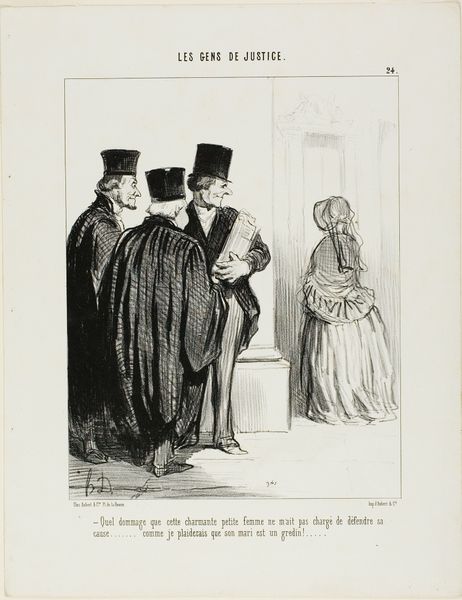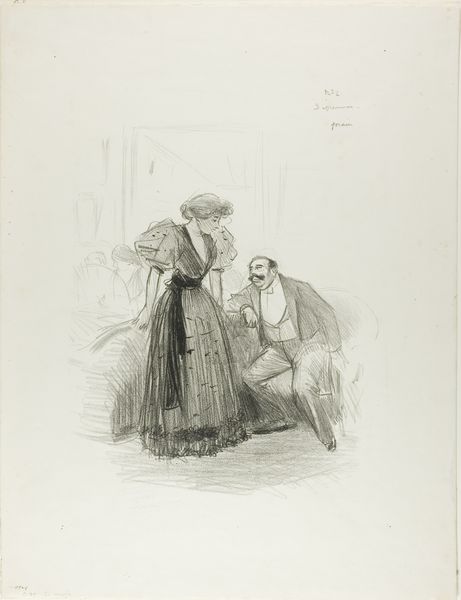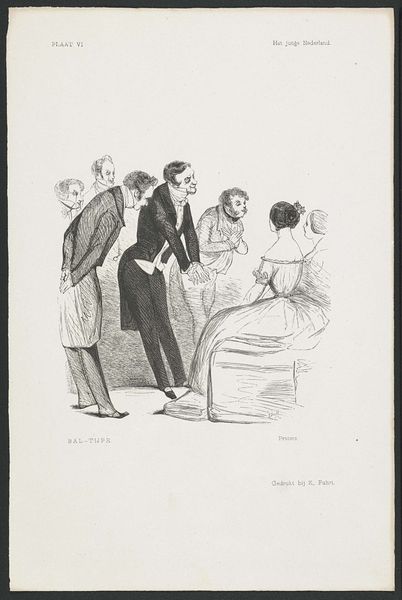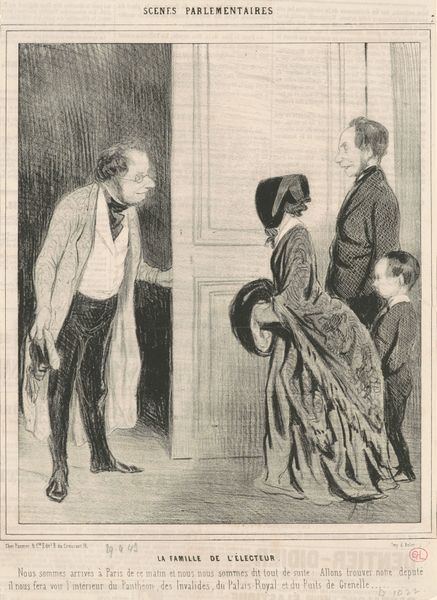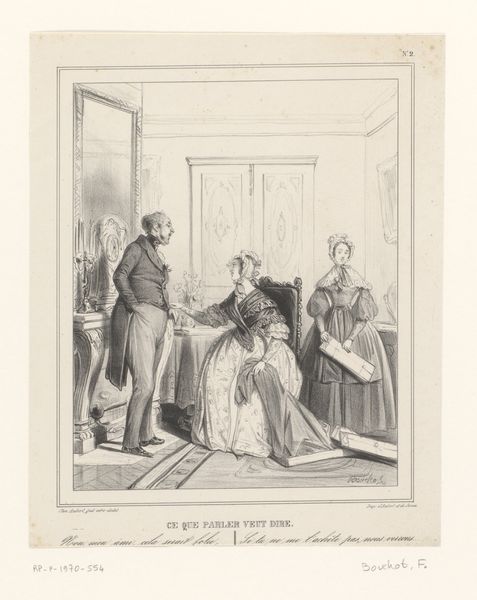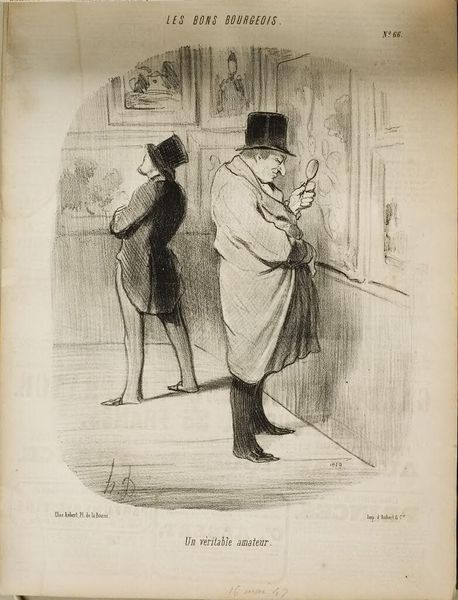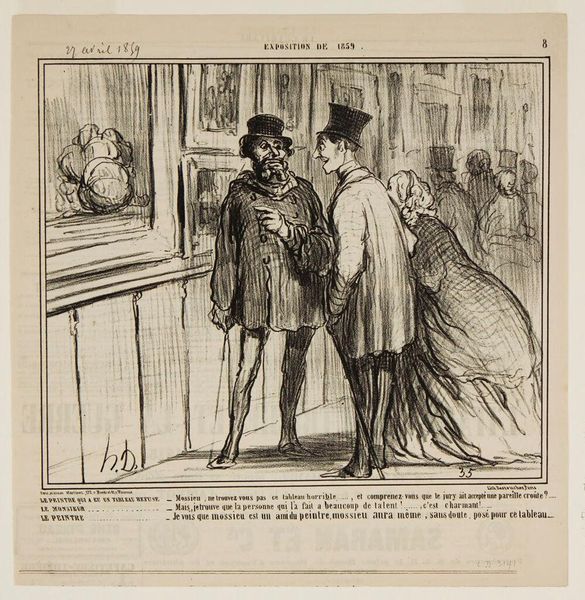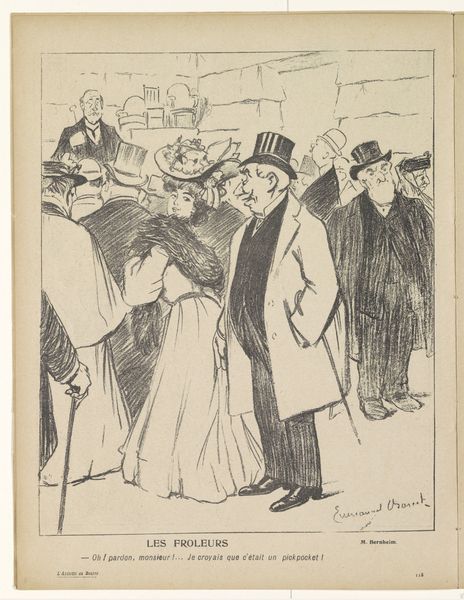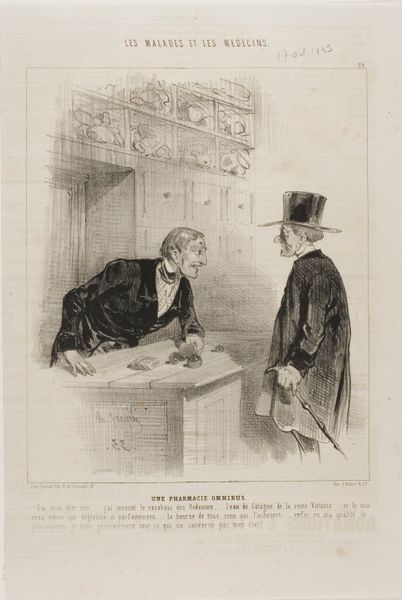
drawing, ink, pen
#
portrait
#
drawing
#
ink drawing
#
narrative-art
#
figuration
#
ink
#
pen
#
genre-painting
Dimensions: height 278 mm, width 185 mm
Copyright: Rijks Museum: Open Domain
Curator: This piece, titled "Engagement en debut," was created in 1847 by Rombertus Julianus van Arum. It’s an ink and pen drawing, currently residing here at the Rijksmuseum. What are your initial thoughts? Editor: Immediately, I'm struck by the somber tone despite the presumed title suggesting new beginnings. The woman’s bowed head and averted gaze project a real sense of melancholic resignation. It makes me wonder what symbols might be at play here, suggesting something other than joyful expectation. Curator: That’s a keen observation. Van Arum was working in a time of increasing industrialization and social stratification, so the narrative unfolding here may reflect tensions around marriage as an economic or social transaction. Her posture really sells that. Editor: Precisely! The trio of men ogling at a distance seem almost predatory, and the subtle detail of the coat of arms above the doorway almost feels satirical. Are we looking at a critique of class structure masquerading as a genre scene? It also reads like a comment on display and value, and maybe the cost for this woman entering society. Curator: The artist clearly positions the viewer to consider the complexities of women’s roles in 19th-century Dutch society, how power dynamics operated. Think about how limited roles were available. It is very compelling to read this piece with its satirical gaze, considering how the woman's social debut functions within this very constrained environment. Editor: The ink drawing is full of interesting choices. There is definitely that push and pull, the visual cues like her cane and shawl all seeming to whisper caution, even fear. We could see the symbol of the house itself almost imprisoning, and its frame suggesting a stage, adding performance to this already pressured scene. The play of shadows here intensifies the unease. Curator: These kinds of depictions of bourgeois life, as seemingly quotidian, actually underscore deeper questions about power, obligation, and individual agency in Dutch society, don't you agree? Editor: Absolutely, that careful attention to details, even those that appear mundane on first viewing, is ripe with iconographic meaning, providing a lasting resonance with the artwork. Curator: Considering that historical framework sheds so much light on a work like this, doesn't it? Editor: It truly deepens our engagement with the visual narrative!
Comments
No comments
Be the first to comment and join the conversation on the ultimate creative platform.
